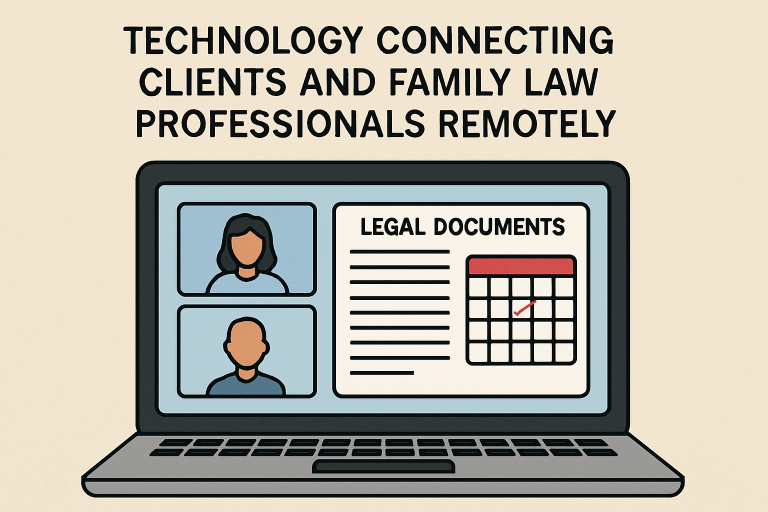Family law is navigating an era of profound transformation. Technological progress and shifting perspectives on relationships are reimagining the way families approach legal challenges. Law firms and practitioners are leveraging innovative tools and dispute resolution methods to provide more adaptive and compassionate support. Clients now have access to efficient resources, whether they’re navigating child custody, support arrangements, or seeking guidance from a trusted divorce attorney Tampa. As these technological and social trends shape family law, legal professionals and families must adapt to move through disputes with greater understanding and efficiency. Harnessing modern tools and alternative methods often makes for smoother transitions and more positive long-term outcomes.
Embracing Technology in Family Law
The introduction of technology in family law isn’t just a convenience—it’s a significant driver of accessibility. Virtual consultations allow clients and lawyers to meet and share information without concern for distance or scheduling limitations. These streamlined interactions benefit those who may struggle to attend in-person meetings and can reduce the emotional burden that comes with navigating sensitive issues face-to-face.
Meanwhile, artificial intelligence (AI) is making significant progress in supporting everyday legal practices. AI-based applications accelerate document review, identify patterns in case data, and aid in predicting potential outcomes. With these tools, lawyers can develop more effective strategies in less time, sharing information transparently as cases progress.
The modern legal landscape also includes digital intake forms, secure virtual client portals, and cloud-based case management, all of which further support personalized and responsive service. By leveraging these advancements, clients find more avenues for communication, and legal professionals devote more time to strategy and client care.
With virtual court proceedings now a common feature, family law has become more accessible than ever, especially for people with limited resources or mobility challenges. This makes finding help, such as from a local attorney or guidance for complicated family matters, more feasible for everyone.

Alternative Dispute Resolution: A Collaborative Approach
For many families, court is the last resort. Traditional litigation can escalate conflict, incur steep costs, and disrupt lives for lengthy periods. The rising popularity of alternative dispute resolution (ADR)—methods like mediation and collaborative divorce—empowers families to settle issues with less adversarial tension.
Collaborative divorce extends beyond the two spouses and their attorneys, involving financial advisors, child advocates, and mental health professionals as part of the process. By focusing on teamwork and clear communication, this method helps both parties voice their needs and develop solutions that protect long-term relationships, especially when children are involved.
Mediation, similarly, offers a neutral facilitator to guide negotiations. Mediators help clients find common ground, encouraging compromise and producing custom solutions outside the rigid framework of court-issued orders. These ADR paths place greater control in the hands of the family, often yielding results that feel fair and tailored to everyone’s unique situation.
For families opting out of traditional litigation, resource guides from reputable publications can provide valuable insight into navigating non-adversarial divorce processes.
The Impact of Digital Evidence in Custody Cases
The digital world has become pivotal in family court proceedings. Judges now routinely factor in text messages, social media usage, emails, and even data from co-parenting and messaging apps as part of custody determinations. What gets shared online or saved electronically is considered alongside in-person behavior—and even small missteps can shape case outcomes.
Family law attorneys increasingly counsel their clients on digital hygiene. Being conscious of texts, posts, and emails isn’t just about privacy—it’s about presenting oneself as a responsible and cooperative parent or partner to the court. Disciplined online conduct often proves vital when matters of credibility, intent, or parental responsibility arise.
For more information on how digital evidence can affect legal outcomes in family law, resources from publications like Psychology Today explore both the benefits and risks of technology in co-parenting and divorce.
Adapting Legal Practices to Modern Challenges
To meet the demands of rapidly evolving family law, practitioners must fuse empathy with innovation. This means learning new technologies, but also revisiting core principles, such as confidentiality and professional conduct—even as the courtroom moves online. Virtual hearings, for example, must maintain the same standards of decorum as those held in person.
By embracing AI-driven research tools, e-discovery solutions, and secure case management systems, legal professionals can free themselves to offer more creative and targeted advocacy. It’s not just about keeping pace with technological change, but about reaffirming a client-centered approach grounded in trust, transparency, and adaptability.
Conclusion
Family law is experiencing a renaissance marked by innovation and flexibility. New technologies, alternative resolution pathways, and the careful consideration of digital interactions are reshaping legal practice, allowing families to navigate transition with more dignity and confidence. Staying current and employing creative solutions empowers both lawyers and clients to turn modern challenges into opportunities for brighter, more stable futures.







